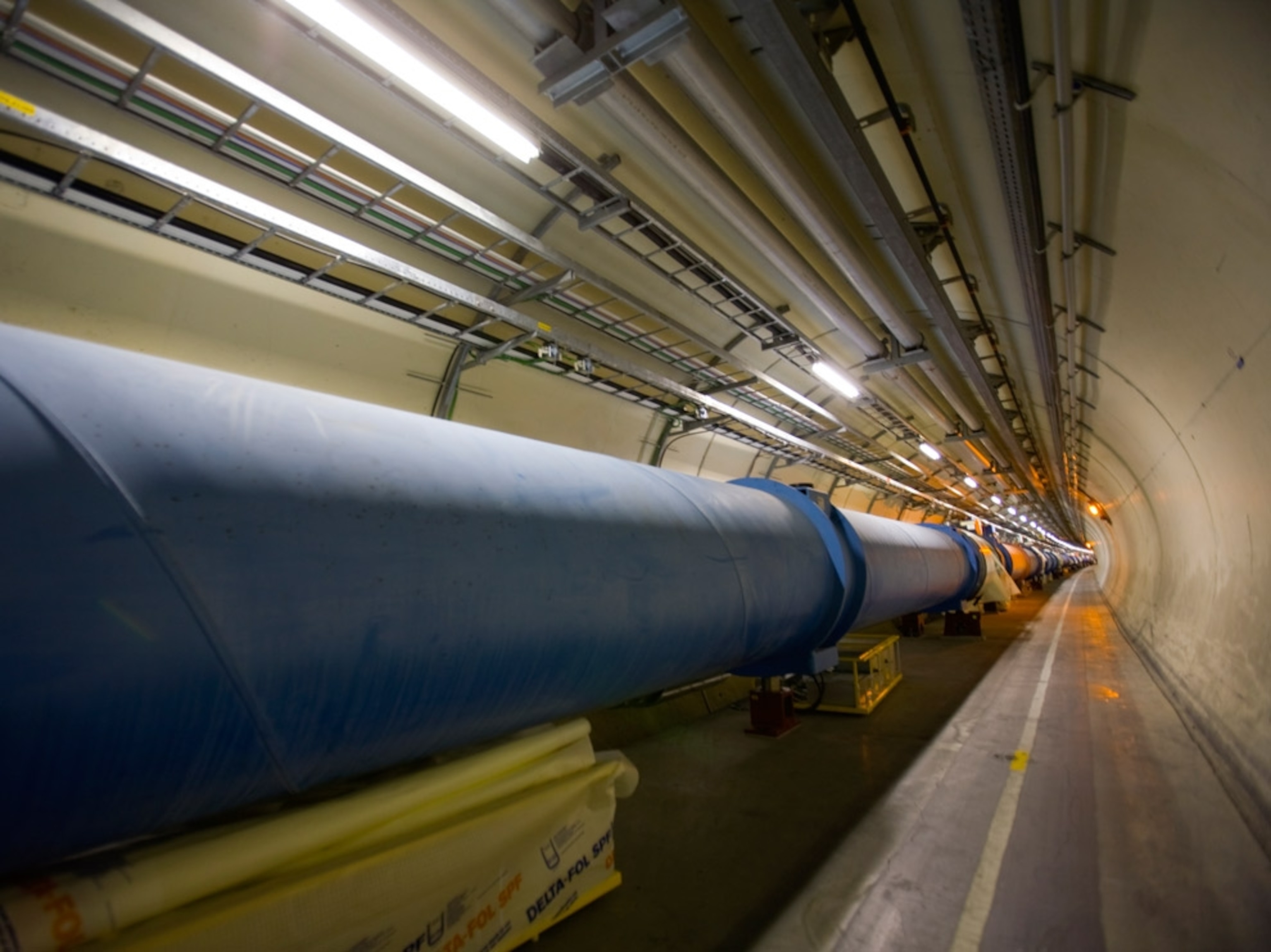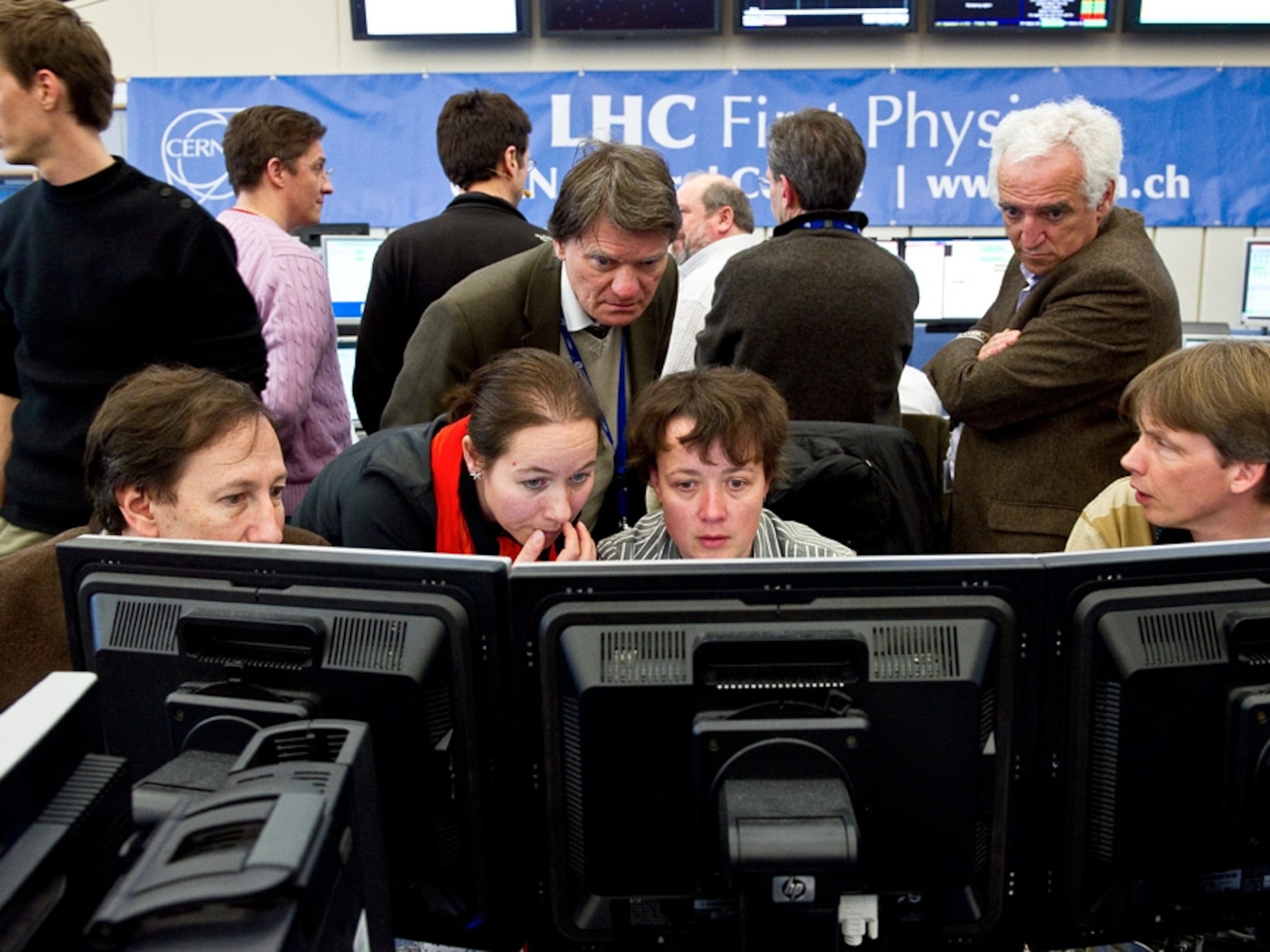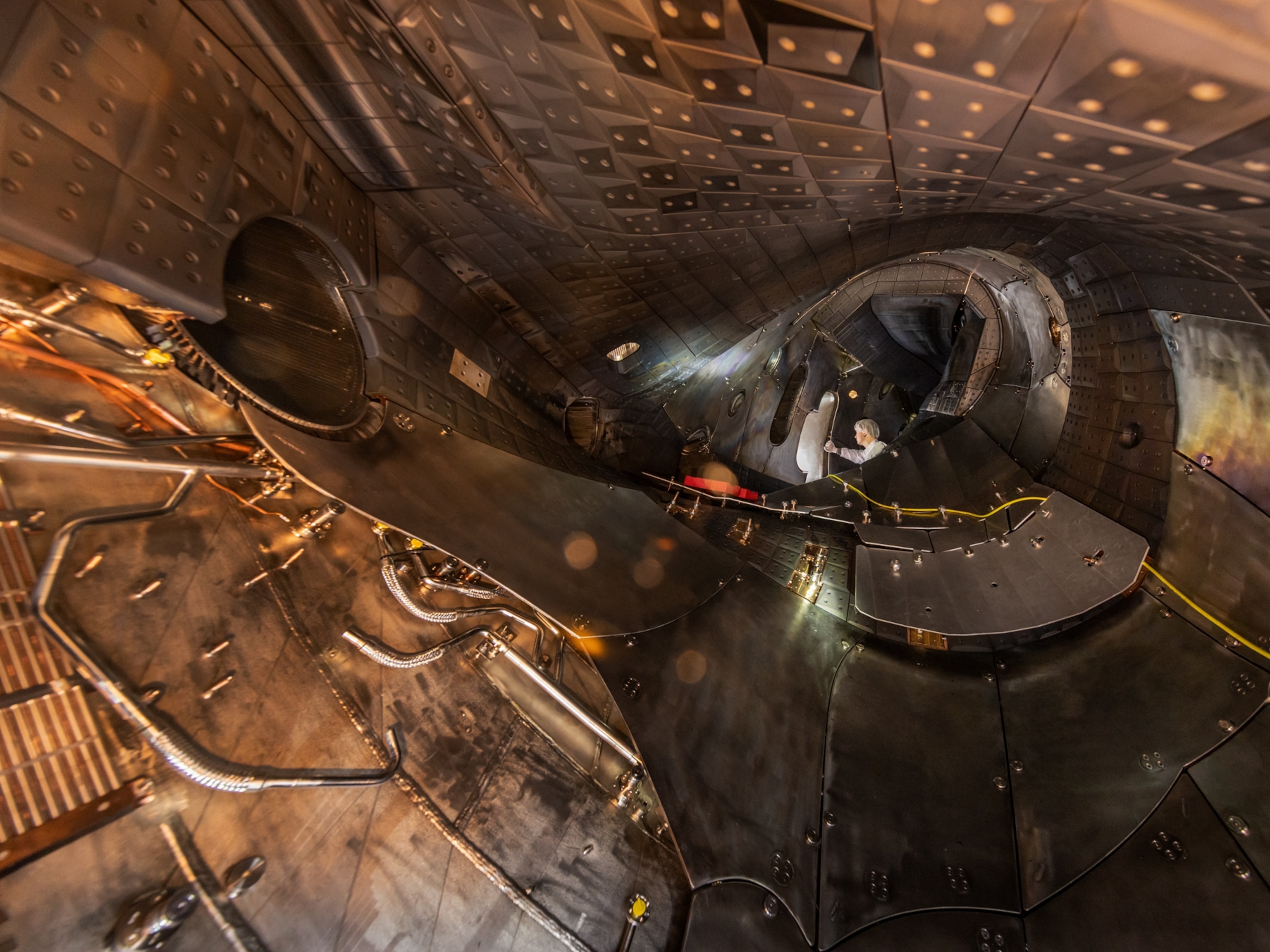
Large Hadron Collider Breaks Energy Record—By 300%
The Large Hadron Collider set a new energy record this morning. In doing so, the "big bang machine" took an important step toward full-power operation.
The Large Hadron Collider (LHC) set a new energy record this morning, tripling its former peak performance. In doing so, the "big bang machine" took an important step toward full-power operation.
At 5:20 a.m., local time, in Geneva, Switzerland, physicists sent two proton beams racing around the Large Hadron Collider's oval-shaped, 17-mile-long (27-kilometer-long) underground tunnel.
Each beam packed a powerful 3.5-trillion-electron-volt (TeV) punch—the highest energy yet achieved in a particle accelerator, or atom smasher. (Learn more about atom smashers.)
The Large Hadron Collider had also set the previous record. Last December the LHC smashed two 1.18-TeV beams to create a 2.36-TeV collision. (See "LHC Gets First Results; Step Toward 'God Particle'?")
The two 3.5-TeV beams will eventually be smashed together to create a whopping 7-TeV energy collision—half the collider's maximum energy level.
"We're all hoping [the collision] will happen in the next couple of weeks," said James Gillies, a spokesperson for the European Organization for Nuclear Research (CERN), which operates the machine.
"If things continue carrying on the way they've been, that's a pretty safe estimate."
Large Hadron Collider Not Fully Recovered
Once 7-TeV collisions begin, the plan is to have the Large Hadron Collider, which lies beneath the French-Swiss border, run continuously for 18 to 24 months before a scheduled shutdown that could last a year or more.
The long break is necessary to complete repairs from an LHC electrical malfunction in 2008, Gillies said. The hiatus will also allow engineers to prepare the collider for 14-TeV collisions—the atom smasher's maximum operating energy.
"We haven't fully recovered from the problems we had in September 2008," Gillies said. "There's still work to be done on the machine before we can move to higher energy. And there's routine maintenance—there always is with these machines."
LHC Going Back to Basics
But even at half power, there will be plenty of things to keep the LHC scientists busy, Gillies said.
Even at 7-TeV, experts say, the LHC could discover long-sought partners of known subatomic particles, evidence of new dimensions, or even the Higgs boson—aka the God particle—a theoretical particle that physicists think is responsible for mass in the universe.
CERN physicists will also be preoccupied with what Gillies calls "bread-and-butter physics."
This will include reconfirming the standard model of physics with the LHC by trying to create elementary particles that have already been seen in other machines—such as top quarks, the most massive of the elementary particles that have been observed so far.
Elementary particles are not made up of anything else and therefore are considered the building blocks of everything else, including the protons and neutrons inside the nucleus of an atom.
"That's a big deal for us, to find top quarks," Gillies said. "They're popping out of the Tevatron [particle accelerator at Fermilab in Illinois] all the time, but we haven't found them yet" with the LHC.





